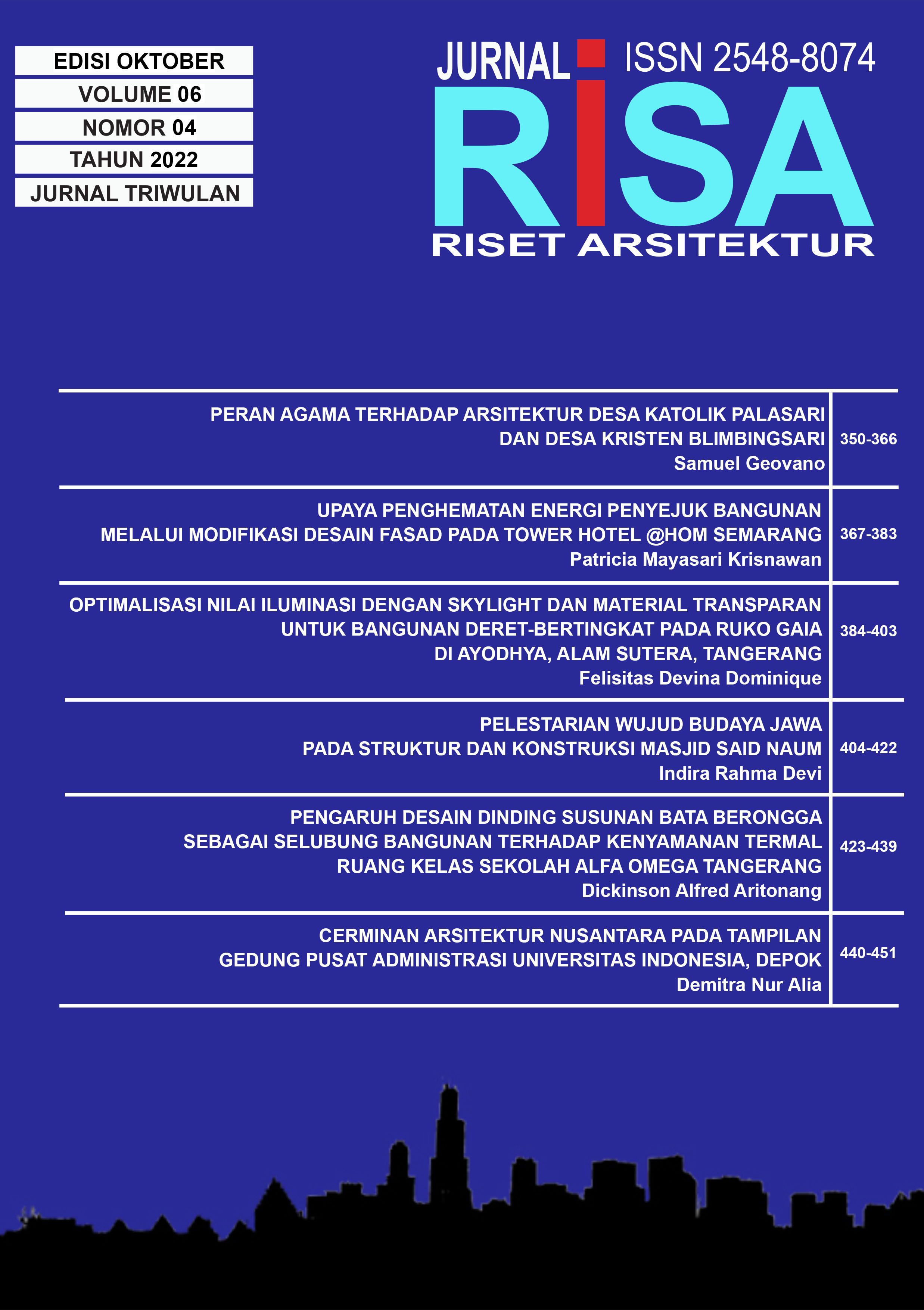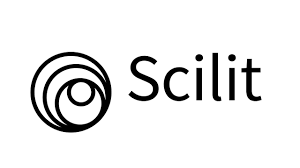OPTIMALISASI NILAI ILUMINASI DENGAN SKYLIGHT DAN MATERIAL TRANSPARAN UNTUK BANGUNAN DERET-BERTINGKAT PADA RUKO GAIA DI AYODHYA, ALAM SUTERA, TANGERANG
DOI:
https://doi.org/10.26593/risa.v6i04.6149.384-403Abstrak
Abstrak - Bangunan deret-bertingkat seperti ruko (rumah-toko) memiliki permasalahan dalam mengakomodasi kebutuhan pencahayaan alami akibat tipologi bangunan yang linear, keterbatasan untuk membuat bukaan samping, dan terdiri dari dua lantai atau lebih. Tipologi bangunan demikian menghasilkan distribusi cahaya yang tidak merata, terutama pada bagian tengah ke belakang bangunan dan lantai-lantai selain lantai teratas.
Salah satu upaya untuk memasukkan cahaya alami atau daylight ke dalam bangunan ruko yang bentuknya memanjang adalah dengan menggunakan bukaan atas (top lighting). Namun keberadaan bukaan atas pun tidak memungkinkan untuk menerangi lantai selain lantai teratas dari bangunan ruko akibat terhalang permukaan lantai. Material transparan seperti kaca memungkinkan transmisi cahaya yang lebih tinggi daripada material opaque, sehingga dengan menggunakan material kaca dapat meningkatkan iluminasi pada ruang di balik kaca tersebut.
Tujuan studi ini adalah untuk mengkaji kesesuaian tingkat iluminasi pada desain pencahayaan alami Ruko Gaia terhadap nilai Daylight Factor (DF), Spatial Daylight Autonomy (sDA), dan Annual Sunlight Exposure (aSE) sesuai standar BREEAM dan IES LM-83-12, mengkaji pengaruh perubahan posisi skylight-tangga dan penggunaan material transparan pada bidang lantai-tangga terhadap tingkat iluminasi, serta melakukan optimalisasi desain untuk meningkatkan nilai DF sesuai standar yang digunakan.
Penelitian diawali dengan melakukan evaluasi pada desain pencahayaan alami Ruko Gaia. Dengan melakukan simulasi alternatif, kemudian akan dilakukan pengkajian pengaruh perubahan posisi skylight-tangga dan penggunaan material transparan pada bidang lantai-tangga terhadap tingkat iluminasi. Apabila tingkat iluminasi yang dihasilkan belum mencapai standar yang ditentukan, dilakukan optimalisasi dengan pengingkatan nilai Visible Light Transmittance (VLT) atau penambahan dimensi skylight.
Metode yang digunakan adalah metoda kuantitatif berupa evaluasi desain perencanaan dan simulasi alternatif. Teori-teori maupun data Ruko Gaia dikumpulkan dari studi literatur, website, brosur, maupun pihak agen properti, serta pengolahan data simulasi dengan software SketchUp dan Lightstanza.
Berdasarkan evaluasi, tingkat iluminasi pada Ruko Gaia belum memenuhi standar BREEAM dari nilai DF dalam kondisi langit overcast, terutama pada lantai dasar. Berbagai studi alternatif menghasilkan kesimpulan bahwa walaupun meningkatkan nilai DF, perubahan posisi tangga-skylight dan penggunaan lantai-tangga transparan belum menghasilkan nilai DF yang sesuai standar BREEAM. Optimalisasi nilai DF dapat dicapai dengan meningkatkan nilai VLT atau memperbesar dimensi skylight.
Kata Kunci: bangunan deret-bertingkat, pencahayaan alami, daylight, skylight, material transparan, tingkat iluminasi, Daylight Factor
File Tambahan
Diterbitkan
Terbitan
Bagian
Lisensi
Hak Cipta (c) 2022 Felisitas Devina D

Artikel ini berlisensiCreative Commons Attribution-NonCommercial-ShareAlike 4.0 International License.












